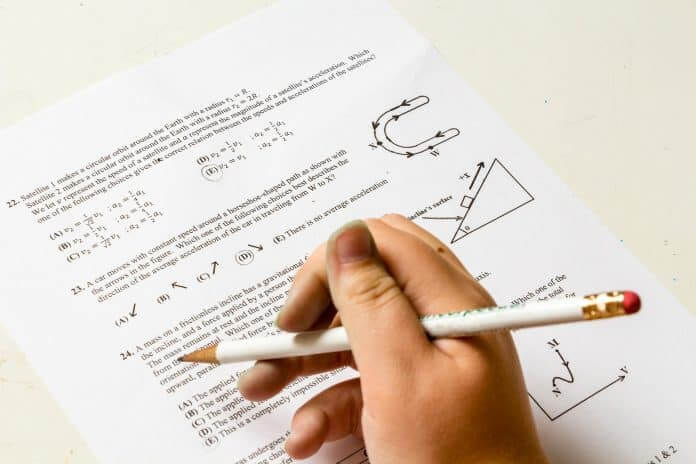Students need to be known for who they are. Teachers knowing student names, understanding who they are and supporting them as they need, is a characteristic of safe schools. However, sometimes being known can be incredibly unfair and can lead to destructive outcomes. There are good reasons for students at times in school to be anonymous, unknown and unidentifiable.
This is particularly the case when writing exams or doing other written assessment tasks involving measurement, comparison and ranking.

There are schools throughout Australia that do not allow students to have the benefit of anonymity during exams and assessments. This had led to destructive and scarcely believable outcomes as the following case studies will attest to.
At one particular school I know, the principal refuses to allow students in Years 11 and 12 to use their State-given student number on assessment tasks. At this school, the students find they are judged by their family name, their prior history and the personal likes, dislikes and preferences of the teachers. The effect of a lack of anonymity is that students feel that any exam taking is a useless, frustrating, personally devaluing and a counterproductive exercise.
Requests by parents of the students for the school to act in accordance with basic standards have been refused by the principal and the teachers. In one instance, the principal’s door was closed on a parent’s face.

The parent in question is an educator whose child refuses to play games and praise the teachers. This child will not even question fundamental factual errors in content, because to do so will bring criticism and a public scolding.
At another school, a student was given a mark by a replacement casual teacher who assessed the work on behalf of the regular teacher. The student was given a mark of 16/20 against criteria supplied for the task. The mark given by the replacement teacher was then crossed out and reduced to 11 by the regular teacher before returning the work to the student.
The teacher’s comment to the casual teacher was, “He could not have done that well. I think you wrote the wrong mark down.” The replacement teacher was confounded by the exchange. This teacher had been a Head of Department and had experience as a senior marker of HSC exams.
“What hope does this boy have?” the replacement teacher remarked later. “His work was well-prepared and well ordered. Comparatively, against peers and the marking guideline, it was a superior effort. I am not sure what has transpired between this teacher and that boy, but against the criteria, he could not have obtained less than 15/20.”
These practices, occurring in some schools have the effect of undermining student confidence, eroding confidence in the system and undermining self-esteem for years.
Is the system of numbers failsafe? Even in schools where numbers are used, problems can exist when teachers have their pre-determined winners and losers. This is evident in a private school English Department where a student with dyslexia reversed two of the numbers of her assigned student number when sitting her English exam
When she received her task back, it had full marks. However, as the teacher handed the scripts back, she said, “This cannot be you.” The student said, “Yes, that is me. It is my writing.” The teacher repeated, “No. This is not you. You have made a mistake.”
The teacher was right – the student had made a mistake. It transpired that the student’s numerical error had given her the same number as a top achieving student. The English markers had access to the student numbers prior to the marking and had therefore marked accordingly.
The common theme here is that when teachers know who the students are, bias and preconceptions can affect the marking process. When students are “known”, marking processes can be corrupt.
When I have said this to colleagues in schools where names, not numbers are used, the usual repost is that the teacher can identify the student through their handwriting anyway. That this is even a consideration suggests that some teachers will do anything they can to keep students from doing well. That is, they mark on the basis of what is supposed rather than what is evident.
All parents should expect that their child is anonymous and that this anonymity be consistent with the principle espoused by Themis, the Lady of Justice. Wearing a blindfold, she dispenses justice without bias, favouritism or personal preference. It should be a fundamental expectation and even a requirement of school registration that students be anonymous when they sit an exam, in any year of their education.
The balance of students being both known and unknown should be the goal of every school.



